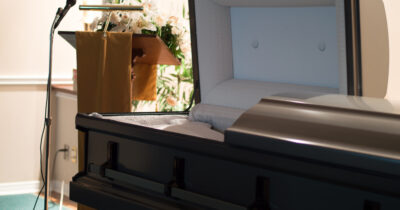
In the epic medieval fantasy Game of Thrones, Emilia Clarke as Daenerys Targaryen was teaming up with fierce allies in her effortless battle against the patriarchy in the fictional Westeros.
Off screen, however the star, who had just wrapped filming season one of HBO’s hit series, was battling for her life after she had a type of stroke that typically leads to death.
“Just when all my childhood dreams seemed to have come true, I nearly lost my mind and then my life. I’ve never told this story publicly, but now it’s time,” writes the star, who survived two brain surgeries. Keep reading to learn about the fatal bleed in Clarke’s brain that almost killed her twice.
Emilia Clarke, now 37, is best known for her Emmy-nominated portrayal of Daenerys Targaryen, the platinum-haired “Mother of Dragons” on Game of Thrones (GOT), who from seasons one to eight, goes from protagonist to antagonist.
“It’s a long story – eight seasons long – but suffice to say that she grows in stature and in strength,” Clarke writes of her character in an essay for the New Yorker. “She becomes a figure of power and self-possession.”
The show’s success launched her career into the stratosphere, with girls around the world wanting to be Khaleesi, the princess with a killer spirit.
“I was terrified. Terrified of the attention…I felt, in every way, exposed,” said the London-born actor, whose character Daenerys kills her husband Khal Drogo (played by Jason Momoa) in the first season. “In the very first episode, I appeared naked, and…I always got the same question: some variation of ‘You play such a strong woman, and yet you take off your clothes. Why?’ In my head, I’d respond, ‘How many men do I need to kill to prove myself?’”
The star of the 2019 film Last Christmas explains in her story, titled “The Battle of My Life,” that she learned to manage the pressure that comes with stardom by working out with a trainer.
‘Never experienced fear like that’
It was in the morning of February 11, 2011, while getting into a plank position, that she felt a “shooting, stabbing, constricting pain,” in her head.
She writes, “At some level, I knew what was happening: my brain was damaged.” She continues, “For a few moments, I tried to will away the pain and the nausea. I said to myself, ‘I will not be paralyzed.’ I moved my fingers and toes to make sure that was true. To keep my memory alive, I tried to recall, among other things, some lines from Game of Thrones.”
Rushed to hospital, a brain scan revealed the actor had a subarachnoid hemorrhage (SAH), which according to John Hopkins, is “bleeding in the space that surrounds the brain,” that “can cause brain cell damage, life-long complications, and disabilities.”
About one third of SAH patients face immediate or near-immediate mortality.
Clarke needed emergency brain surgery, where after three hours, she woke and couldn’t remember her name when asked.
“Instead, nonsense words tumbled out of my mouth, and I went into a blind panic. I’d never experienced fear like that – a sense of doom closing in. I could see my life ahead, and it wasn’t worth living. I am an actor; I need to remember my lines. Now I couldn’t recall my name,” she writes.
‘I thought I was going to die’
Soon after, the condition that caused her inability to communicate – called aphasia – cleared and in less than two months, she returned to film the second season of GOT, all the while knowing a smaller aneurysm on the other side of her brain, “could ‘pop’ at any time.”
She writes, “On the set, I didn’t miss a beat, but I struggled. Season two would be my worst. I didn’t know what Daenerys was doing. If I am truly being honest, every minute of every day I thought I was going to die.”
Despite her massive setbacks, the stage actor continued her impressive performance in the series where her character, and her relationship with her three dragons, becomes more prominent.
“I didn’t want it to be a subject of public discussion and dissection. The show must go on!” she says.
In 2013, after season three of GOT wrapped up, she was playing Holiday “Holly” Golightly in the Broadway production of Breakfast at Tiffany’s when she learned the growth on the other side of her brain had doubled in size.
Clarke was confident that her second surgery would go smoothly and help her put an end to her health battles.
But it didn’t go as planned.
Doctors had to carve through her skull to stop a massive bleed, which would have killed her.
“The recovery was even more painful than it had been after the first surgery. I looked as though I had been through a war more gruesome than any that Daenerys experienced. I emerged from the operation with a drain coming out of my head. Bits of my skull had been replaced by titanium.”
Through it all, the star of Me Before You – a consummate professional – worked through the pain, keeping her health struggles a secret.
Until 2019, when she decided to share her story, in her words, in the New Yorker.
“After keeping quiet all these years, I’m telling you the truth in full.” She shares, “The amount of my brain that is no longer usable – it’s remarkable that I am able to speak, sometimes articulately, and live my life completely normally with absolutely no repercussions.”

The woman, who along with her mom founded SameYou, an organization that supports people recovering from brain injuries, adds that she’s “now at a hundred per cent.”
“Now I tell people that what it robbed me of is good taste in men. But, of course, none of this seemed remotely funny at the time,” she jokes.
Emilia Clarke is such an inspiration and we are so thankful she found the strength to power through her work and give us her best as the fierce Mother of Dragons!
What do you think of this story? Please share your comments with us and then share this story so we can hear what others have to say about this incredible actor!
READ MORE
- Lisa Bonet files for divorce from Jason Momoa two years after announcing split
- Fans catch alarming detail in Joe Jonas, Sophie Turner divorce – and it confirms what we suspected all along




